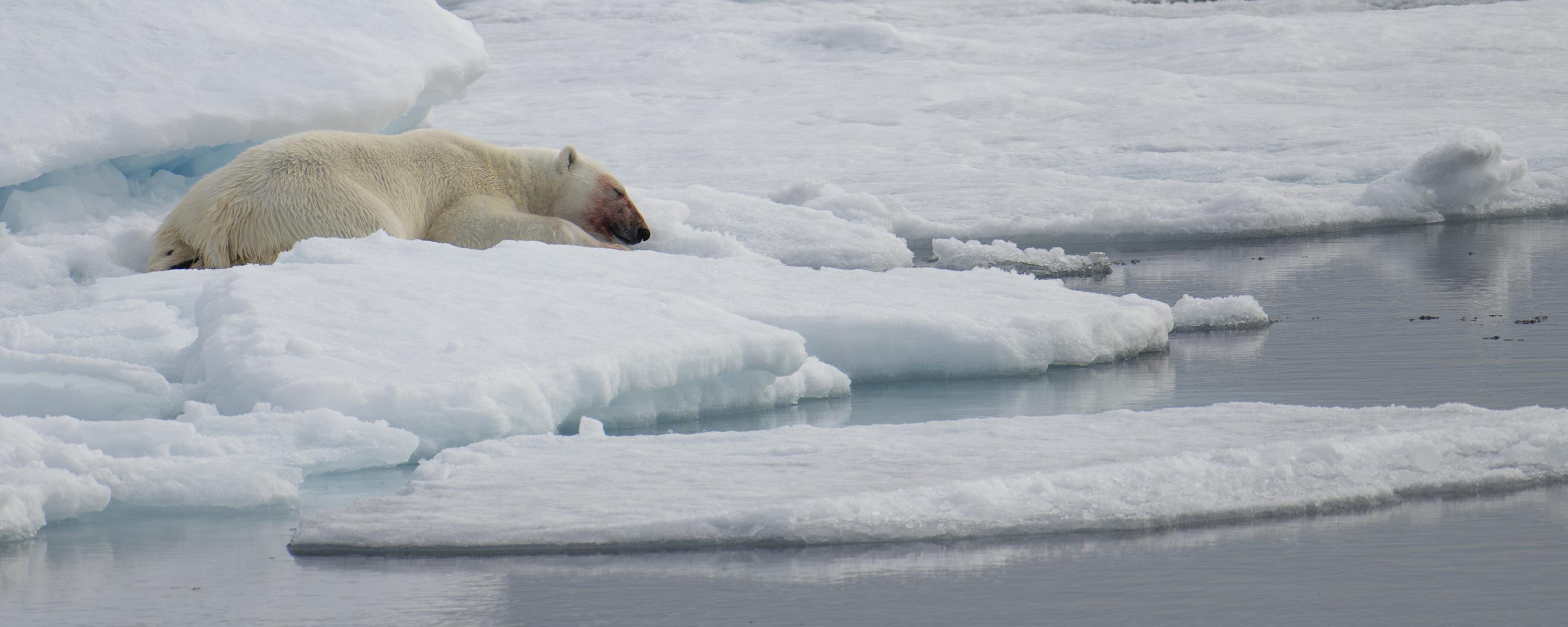
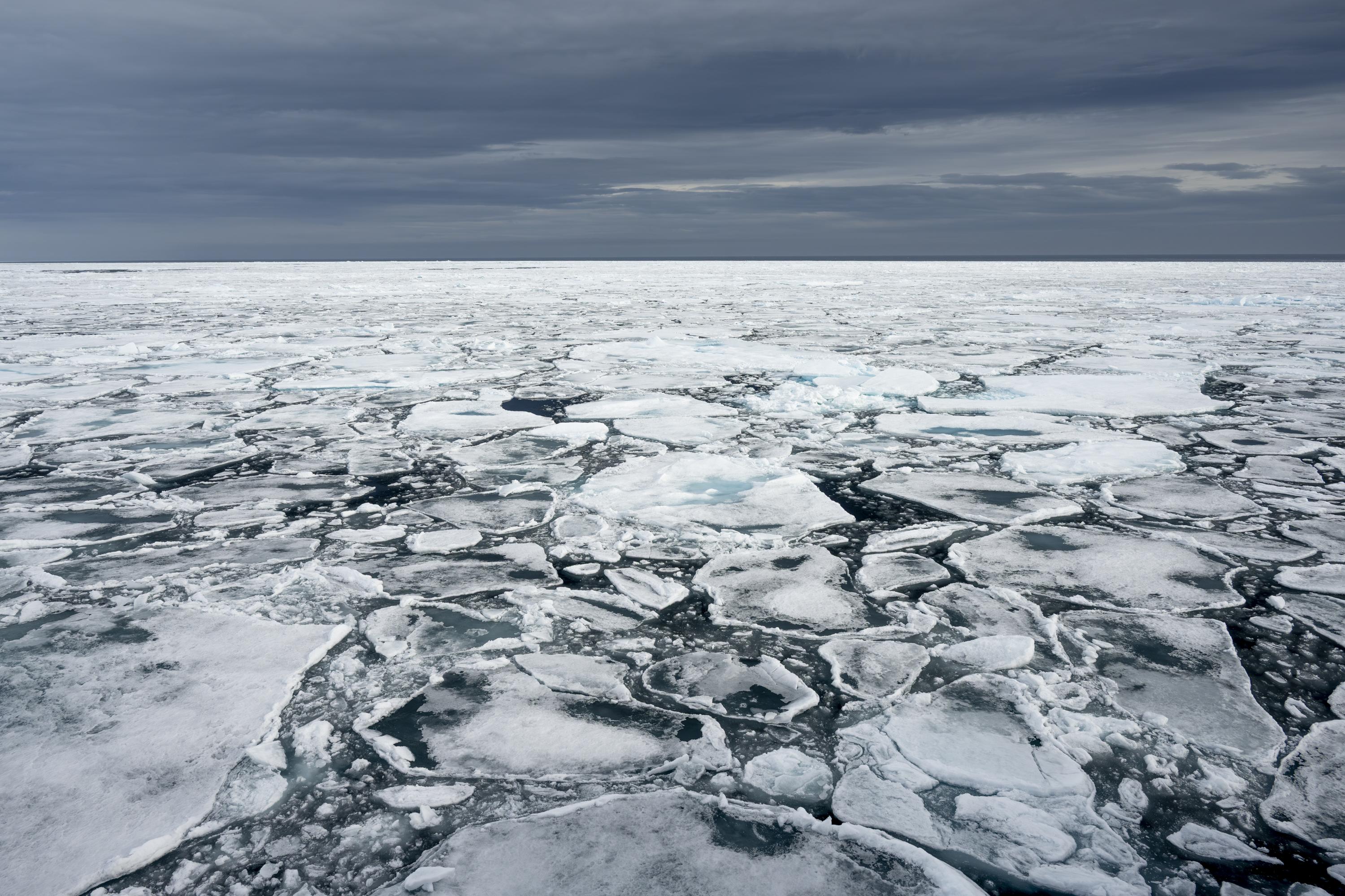
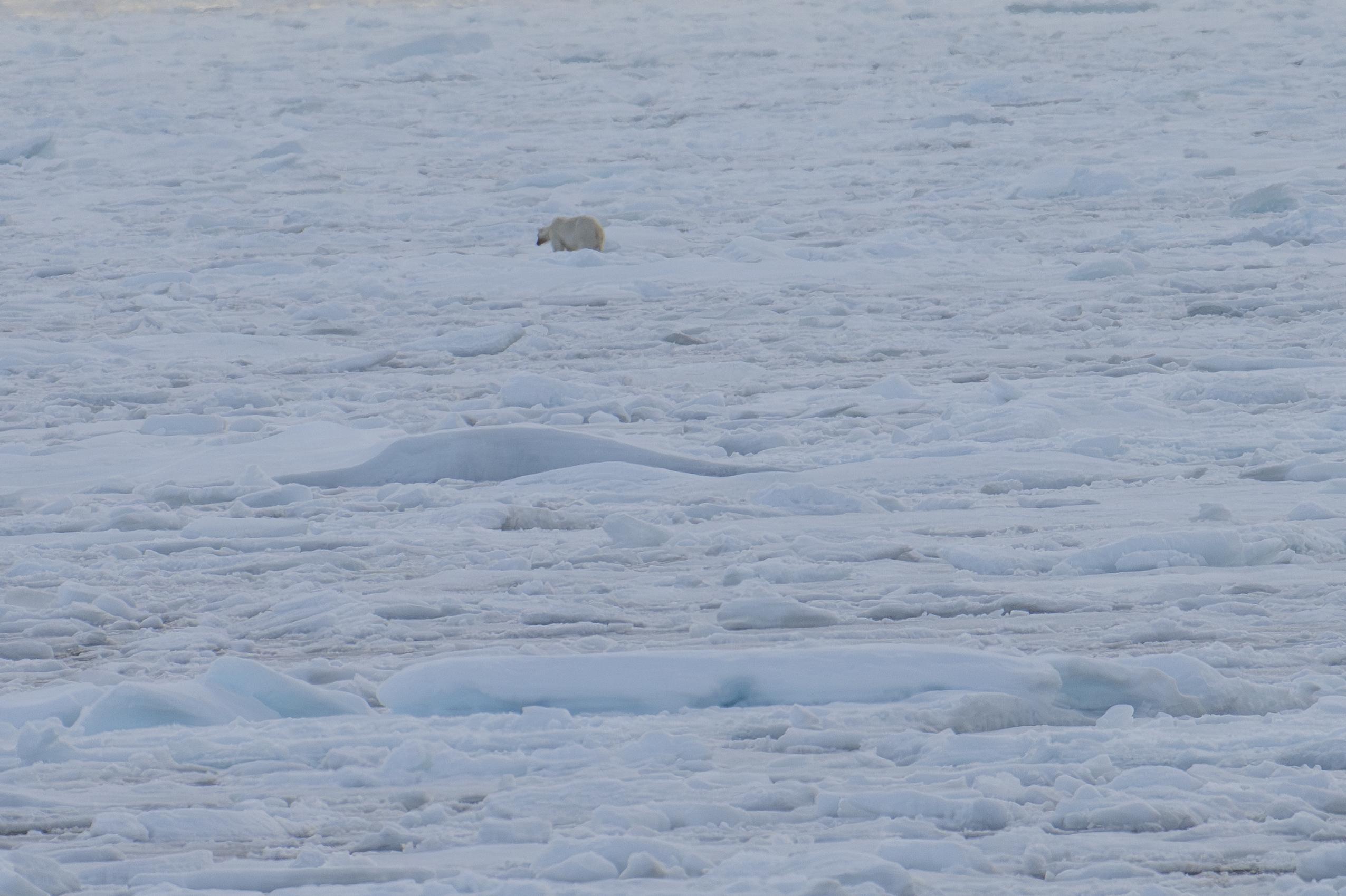
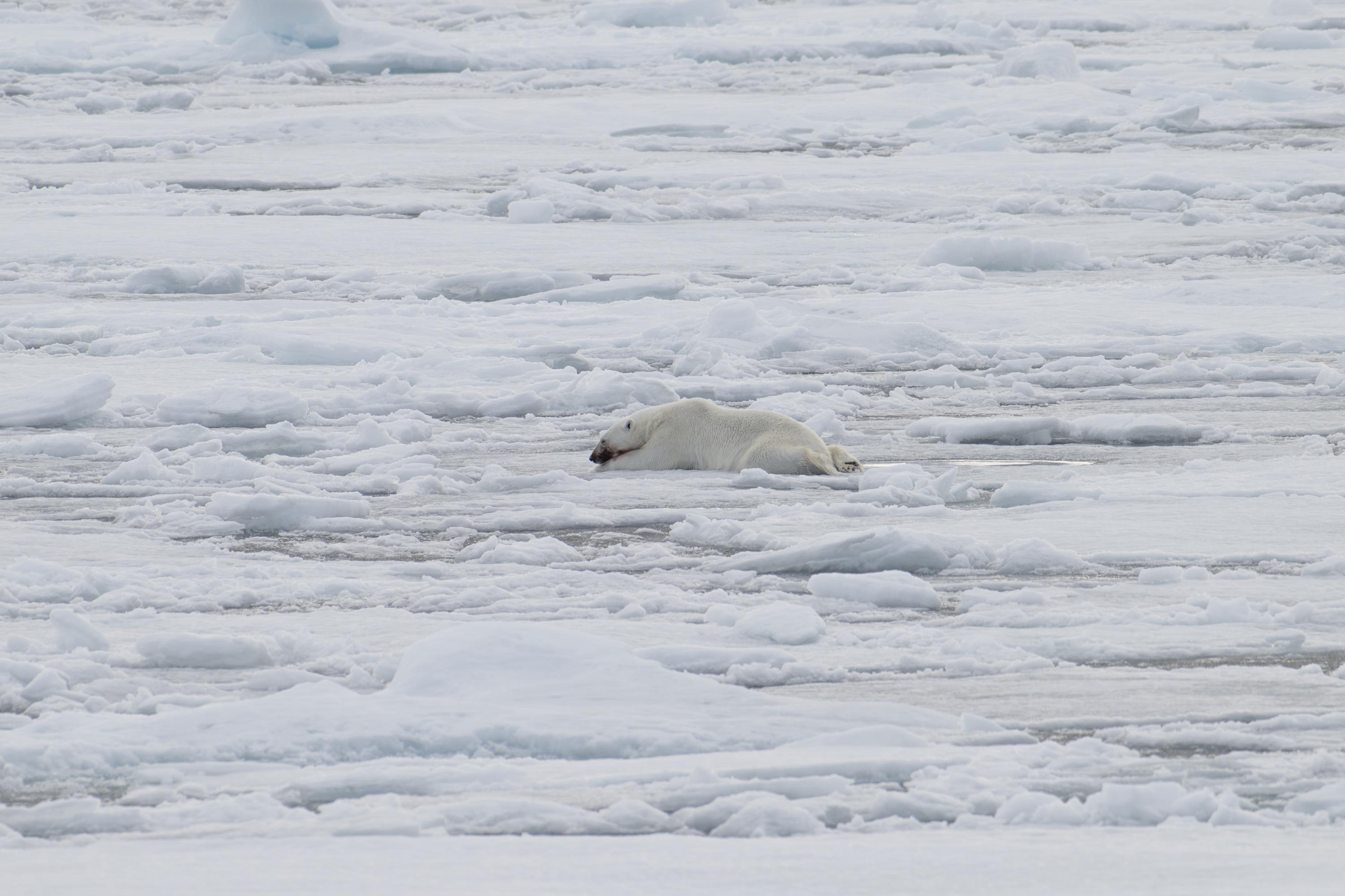
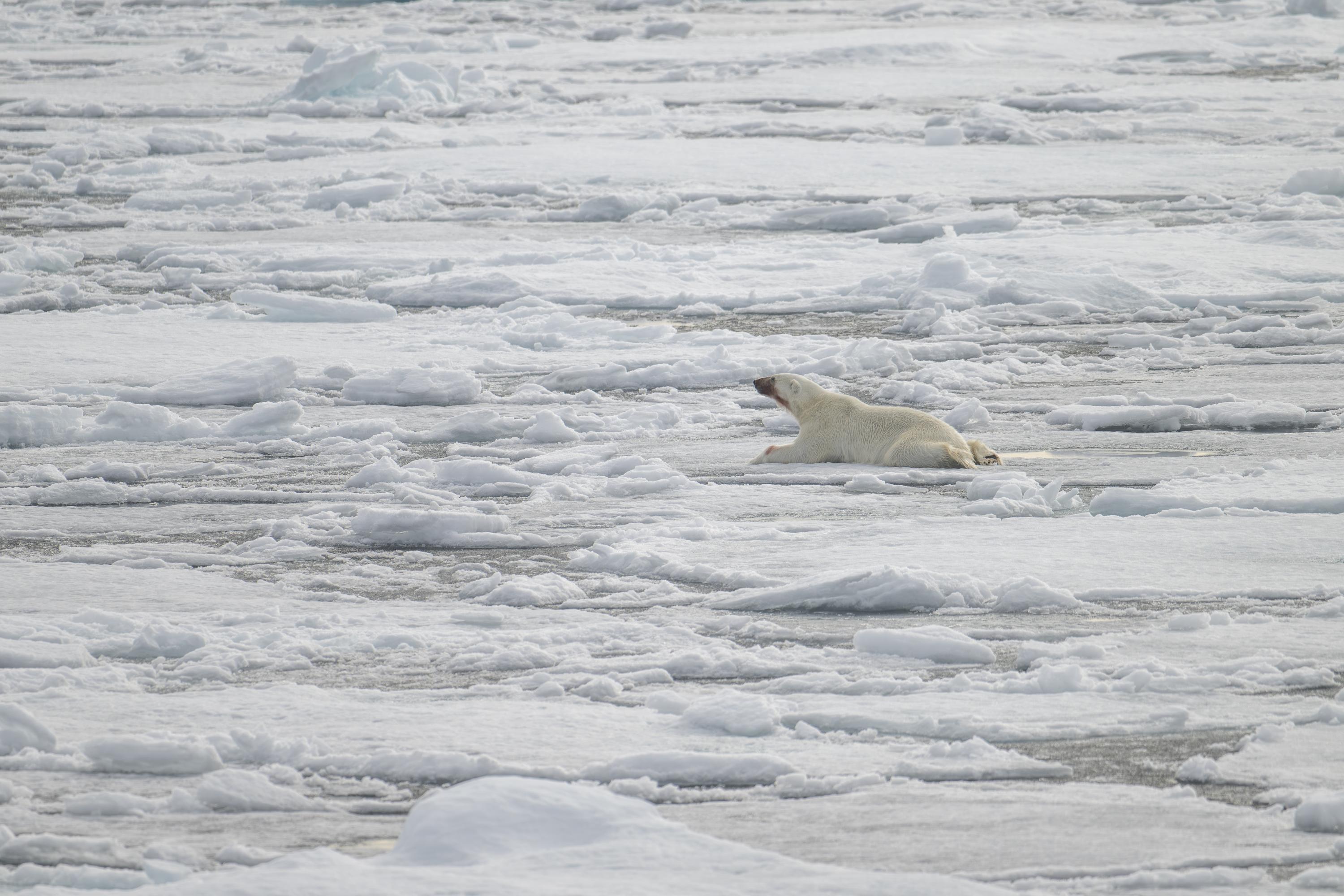
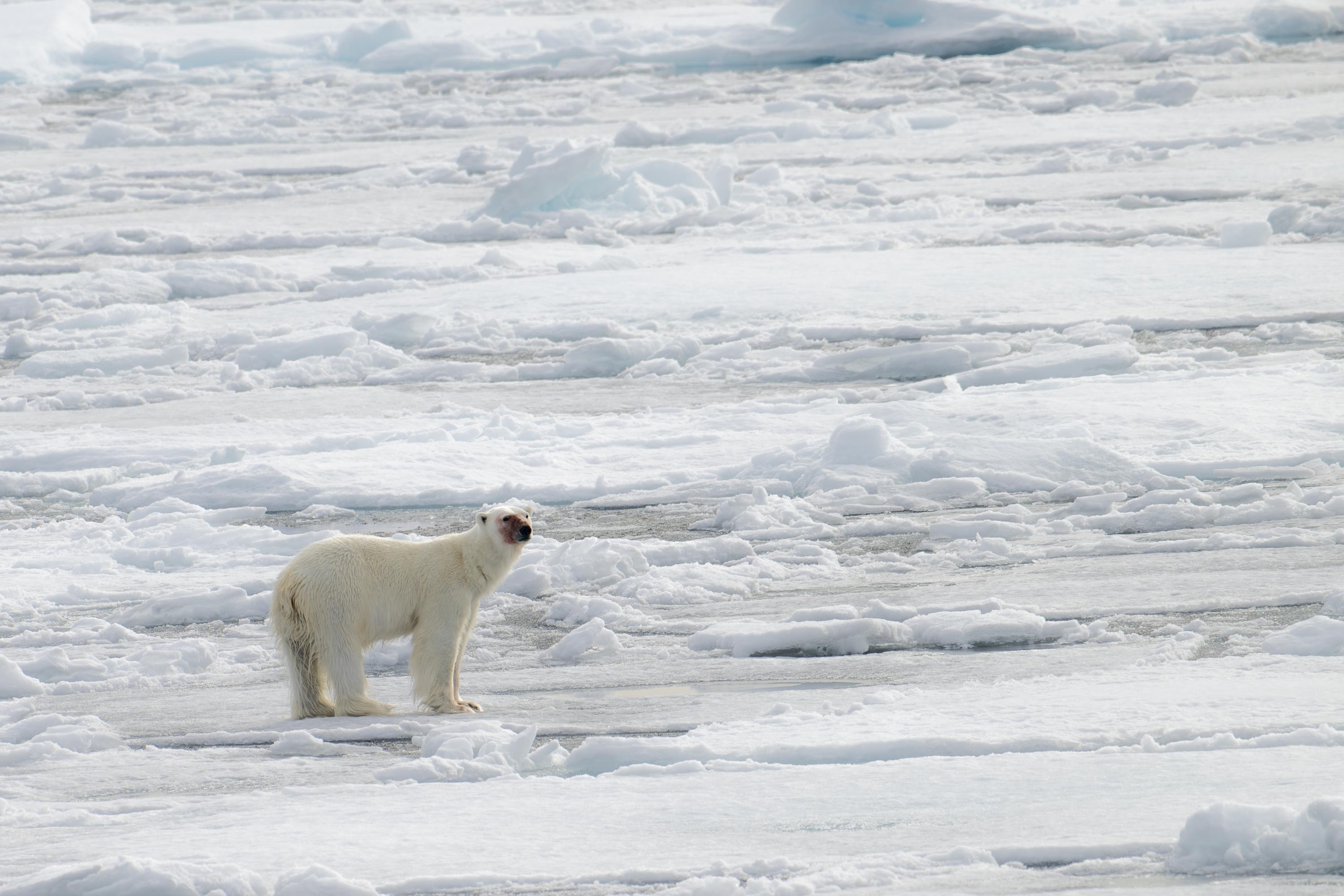
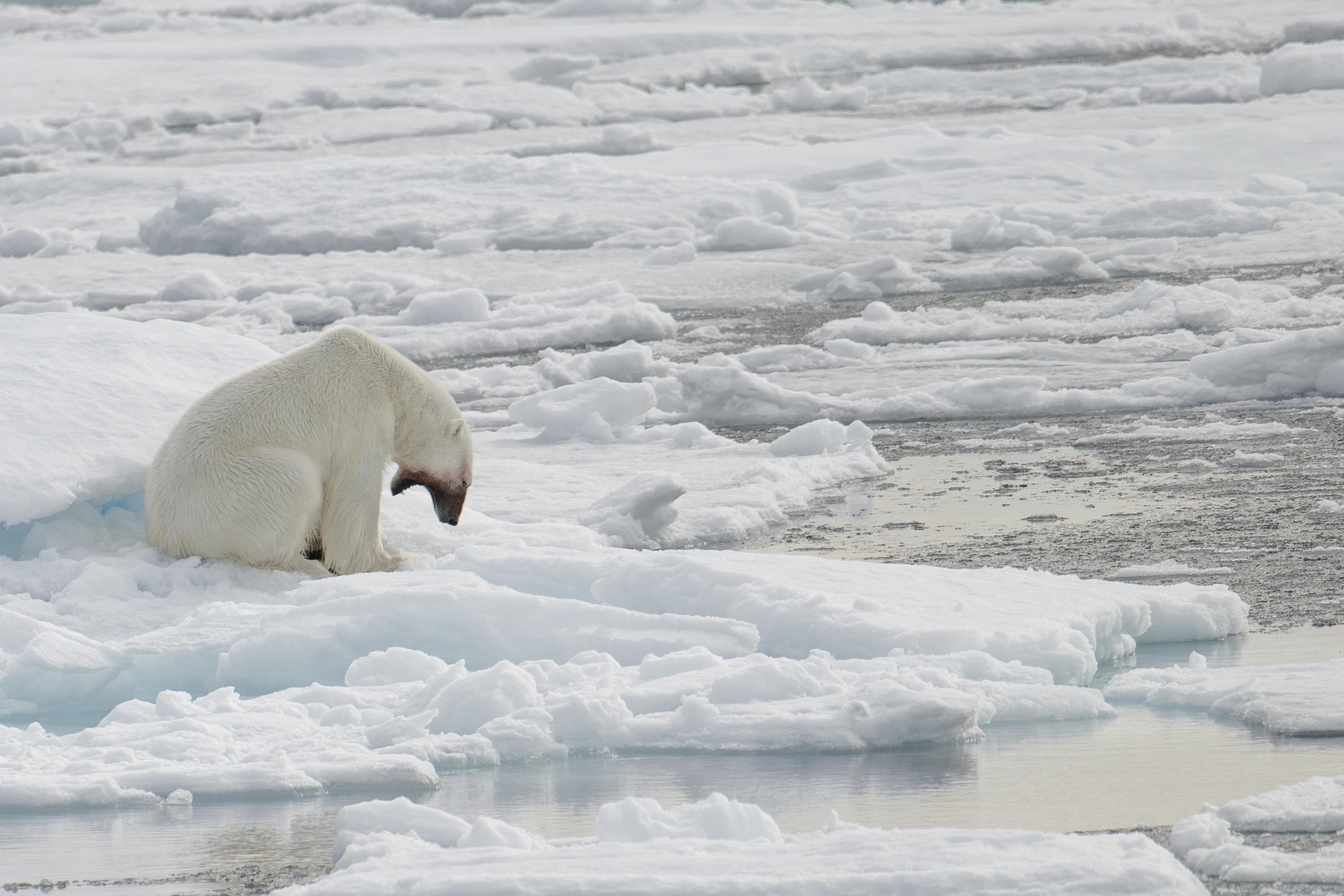
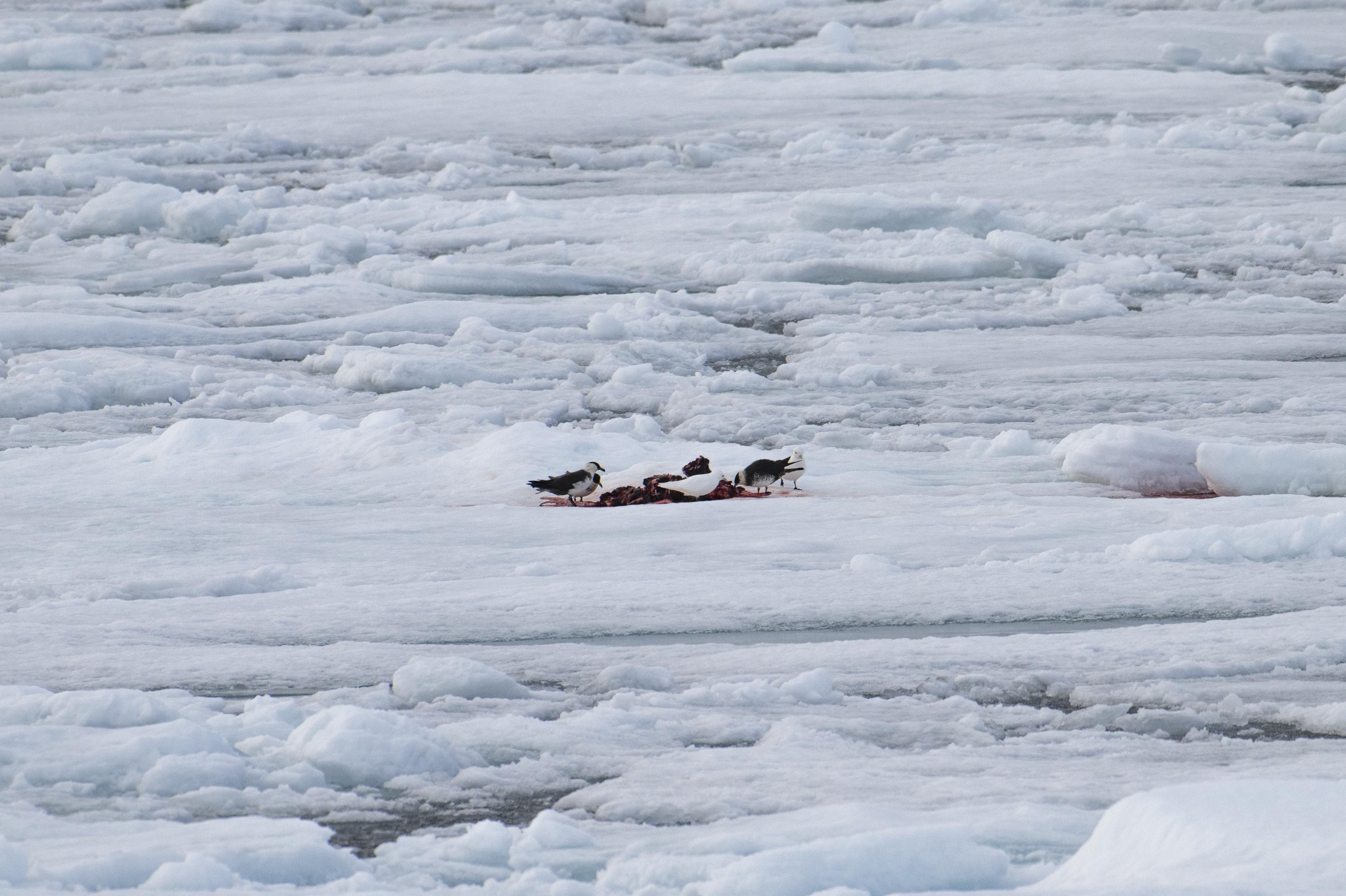
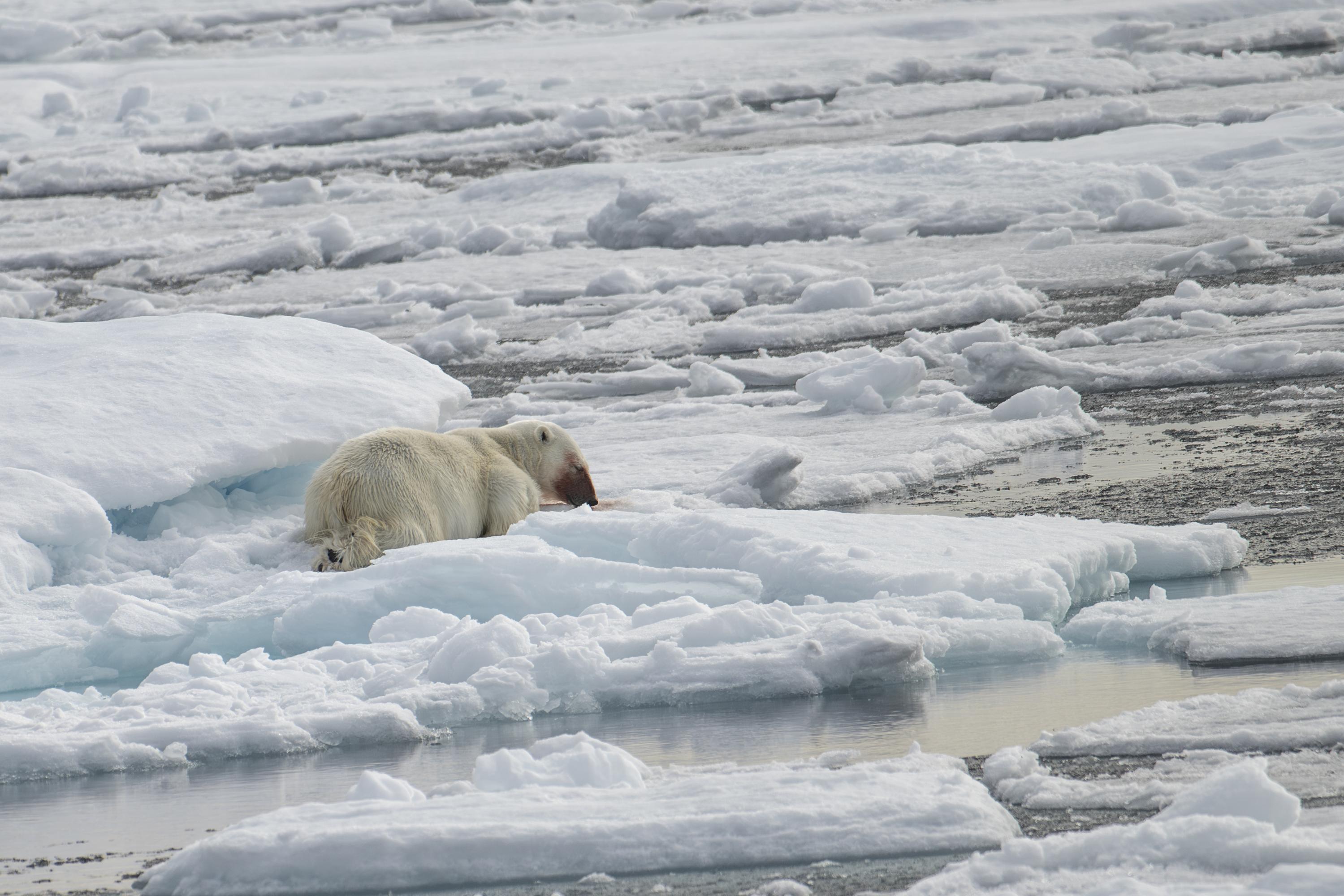
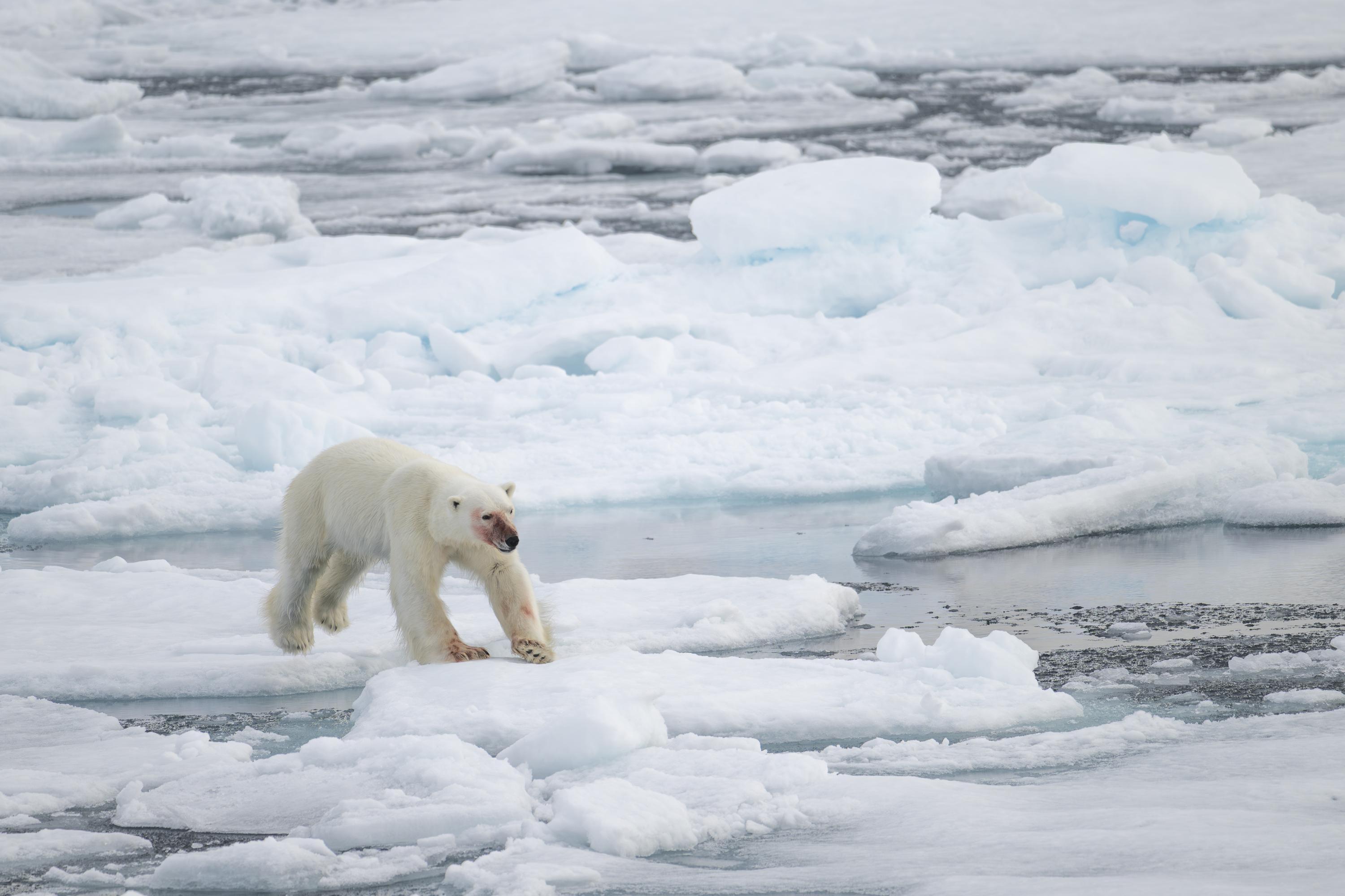
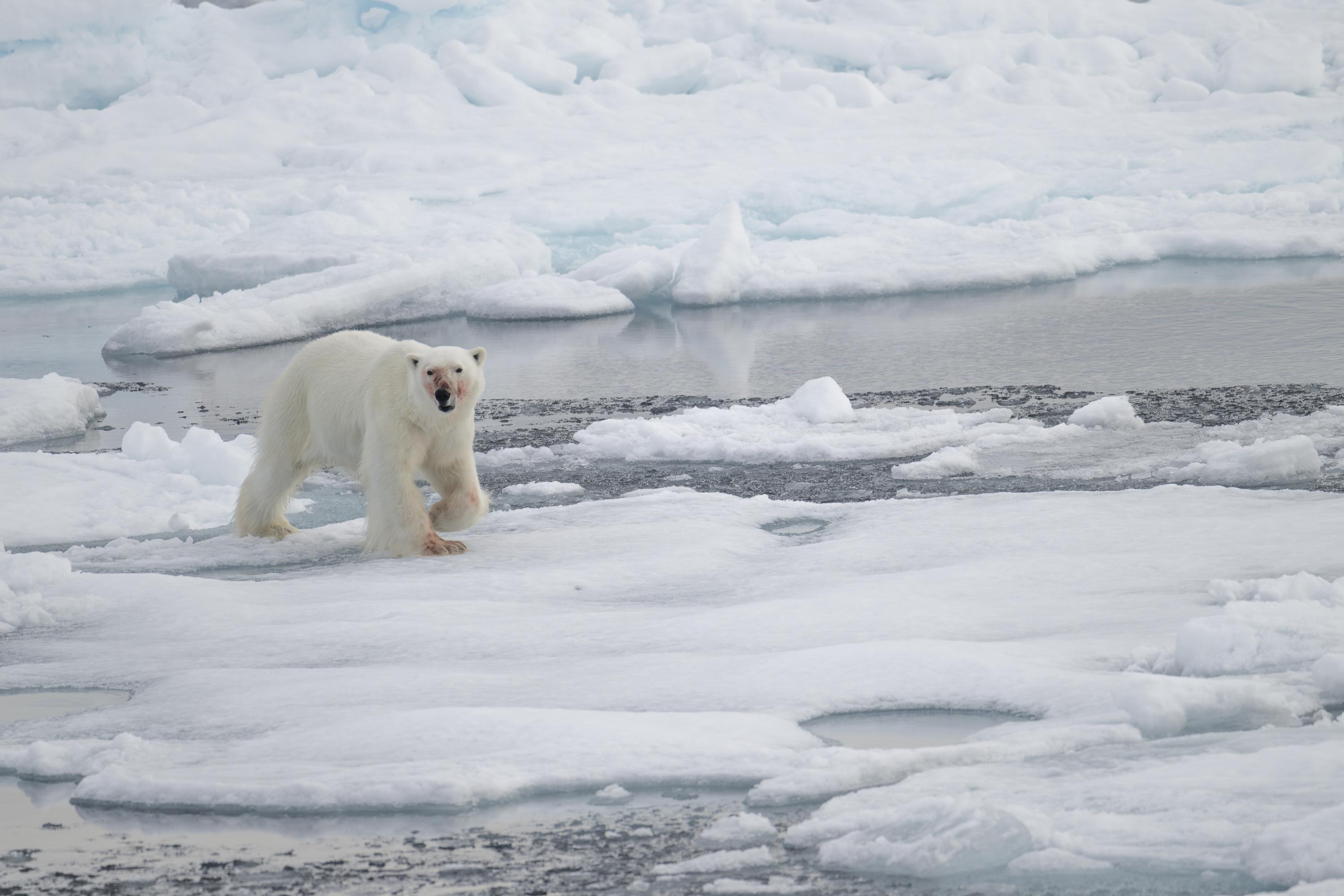
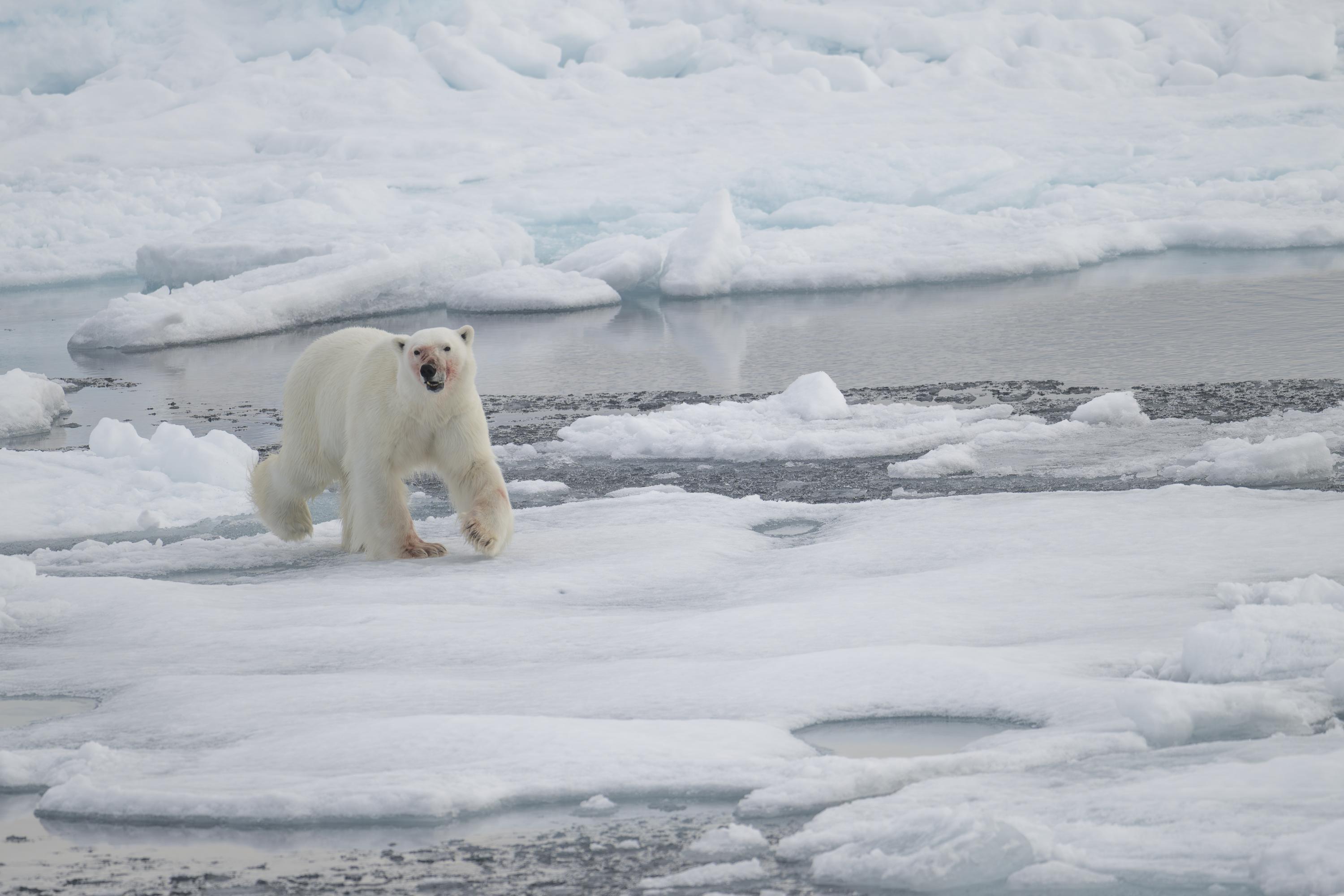
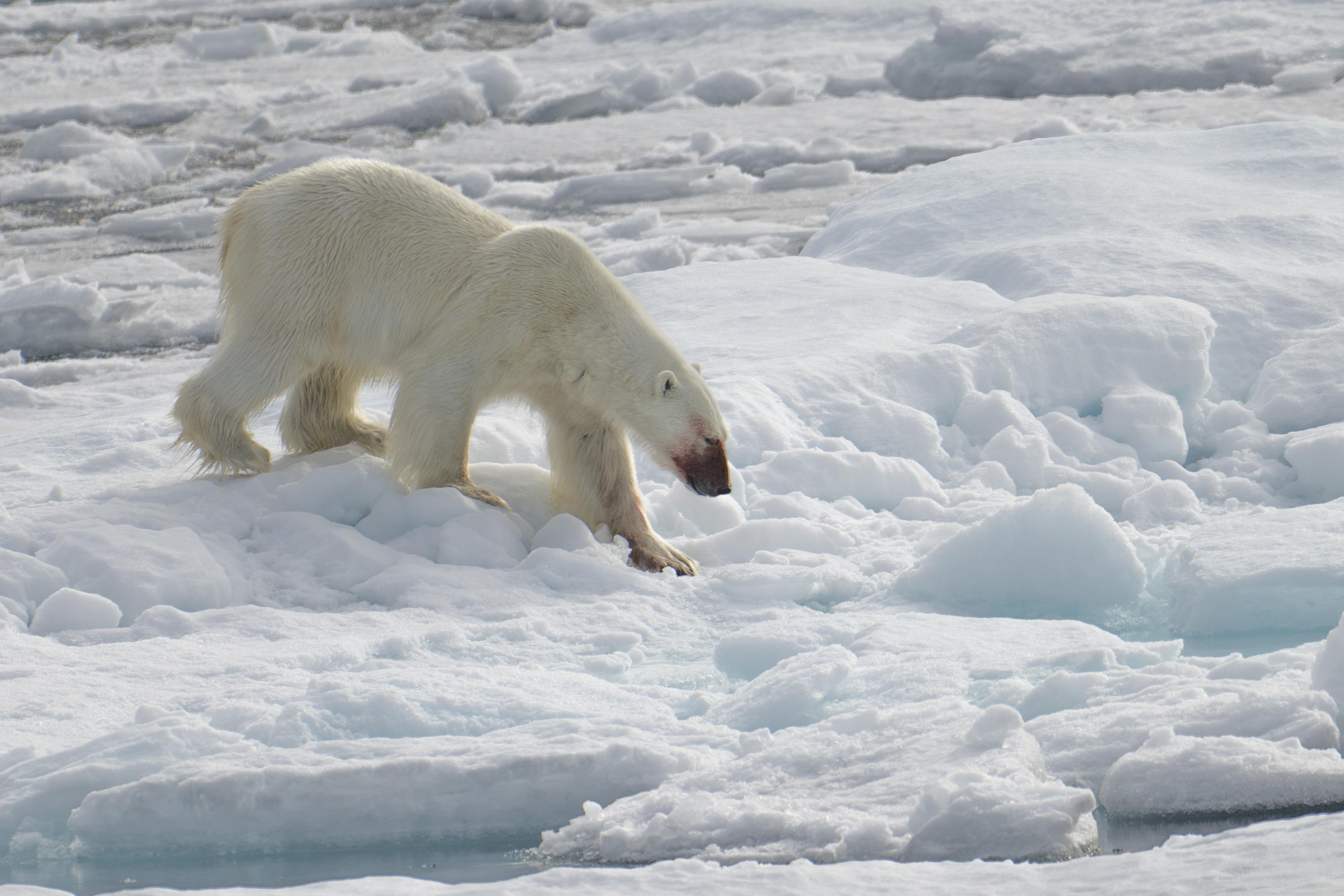
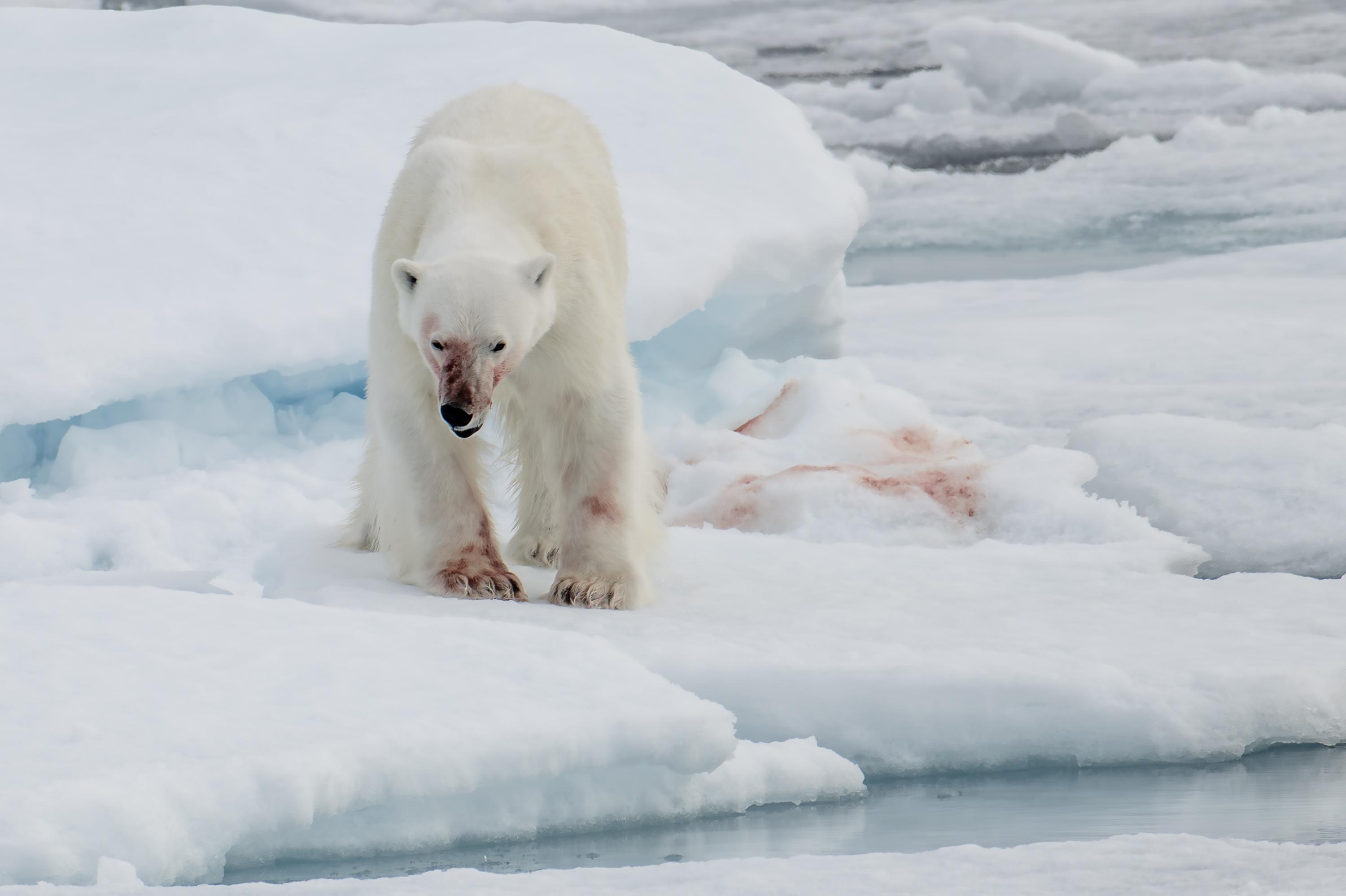
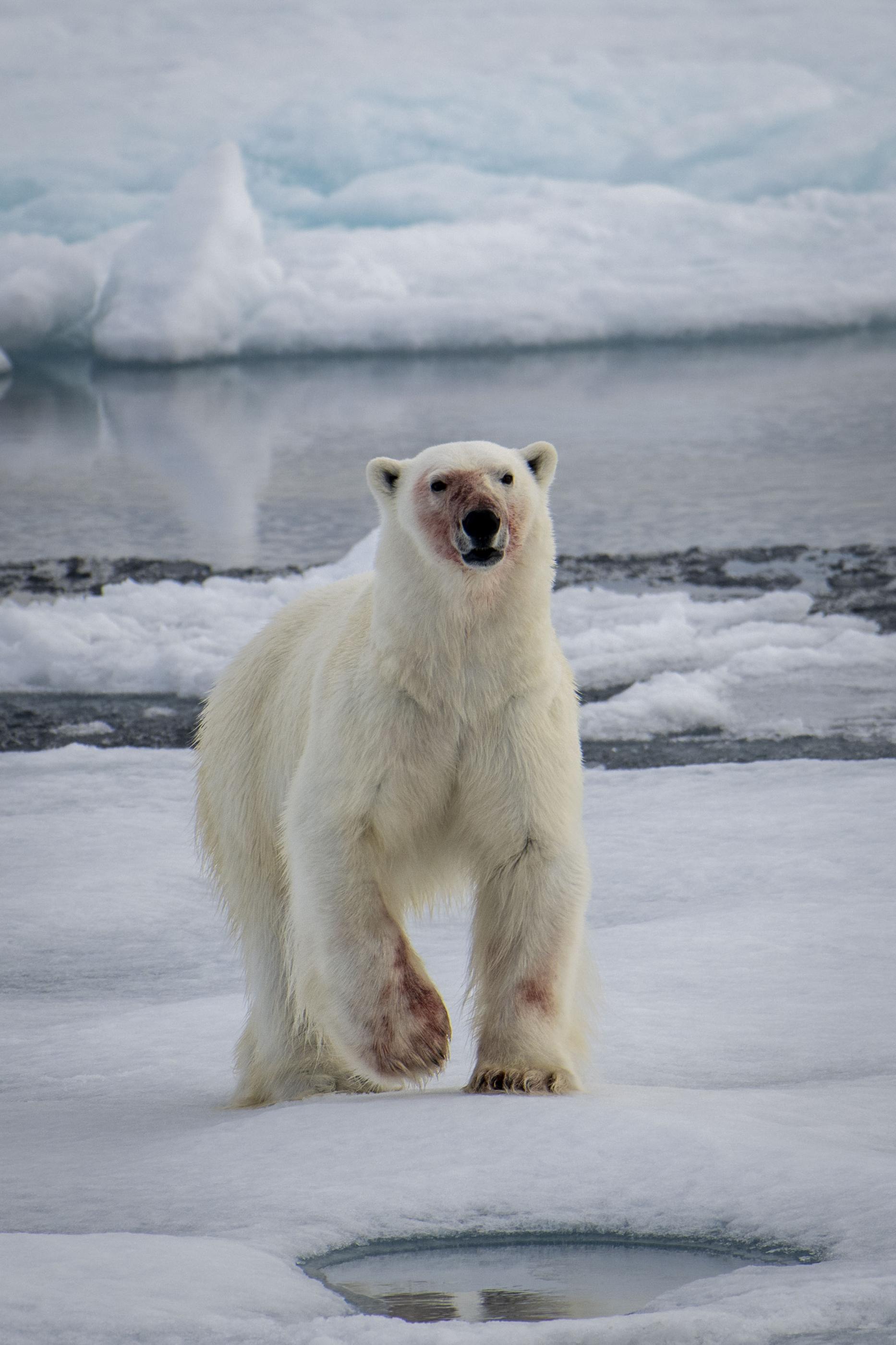
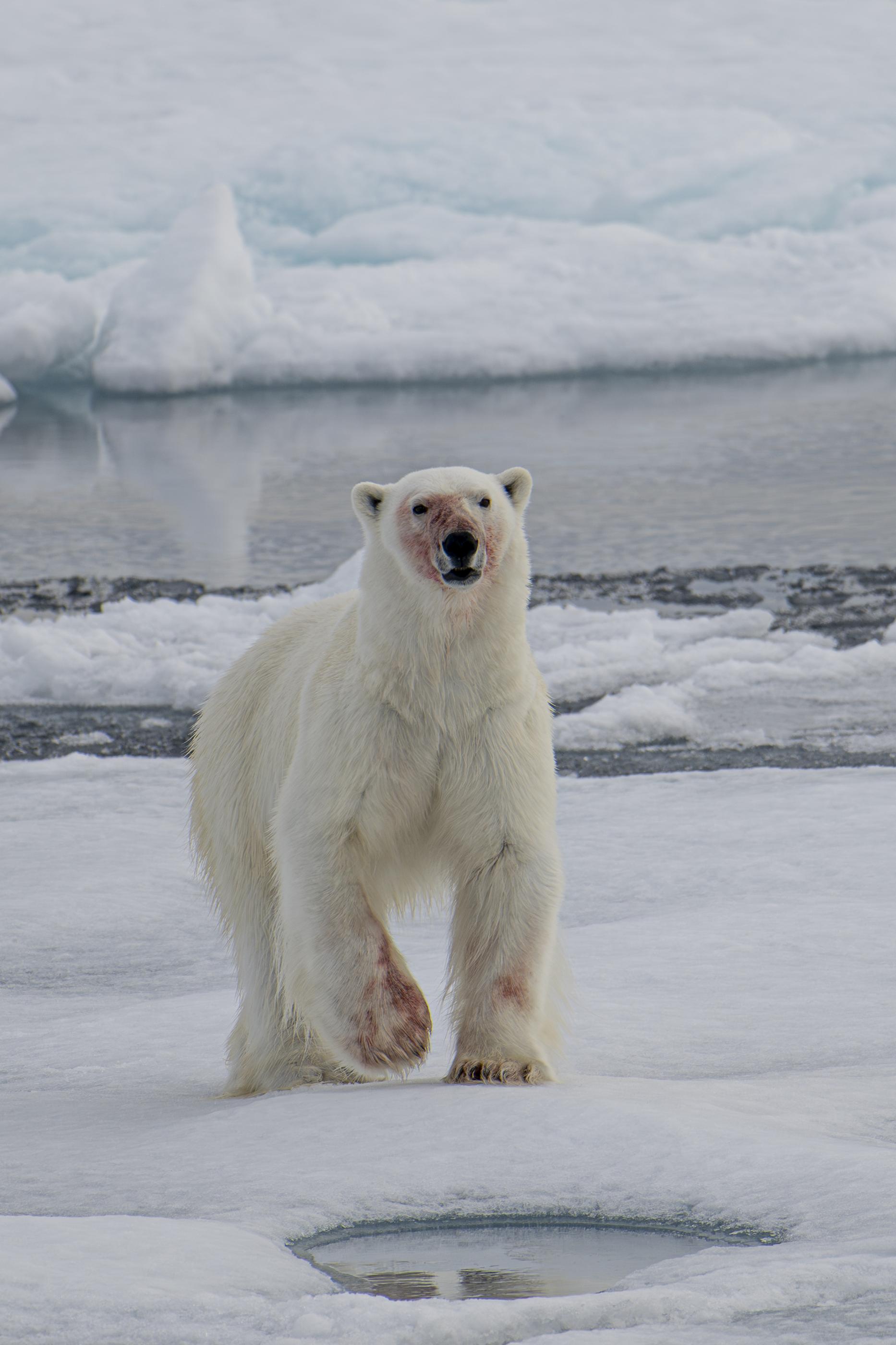
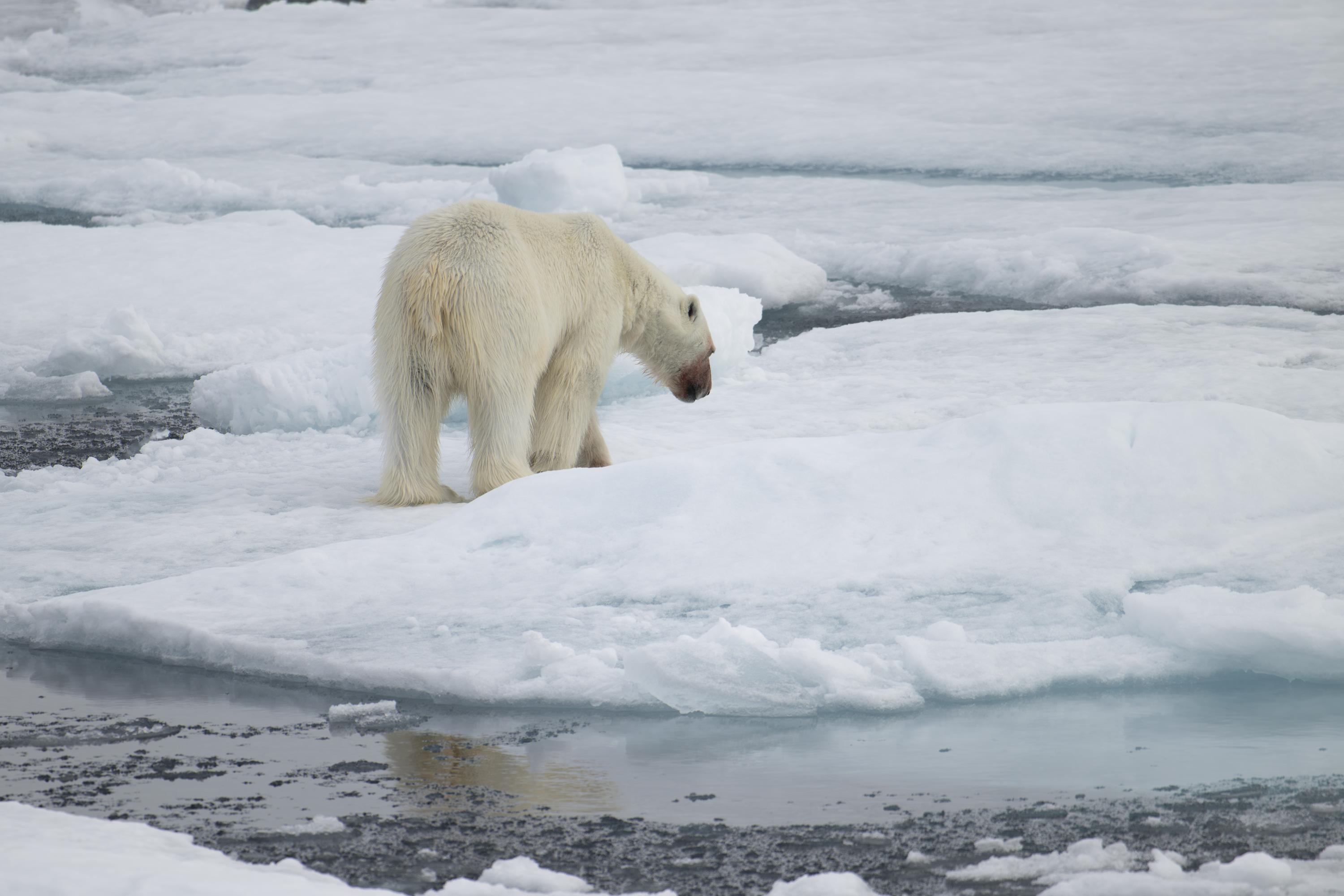
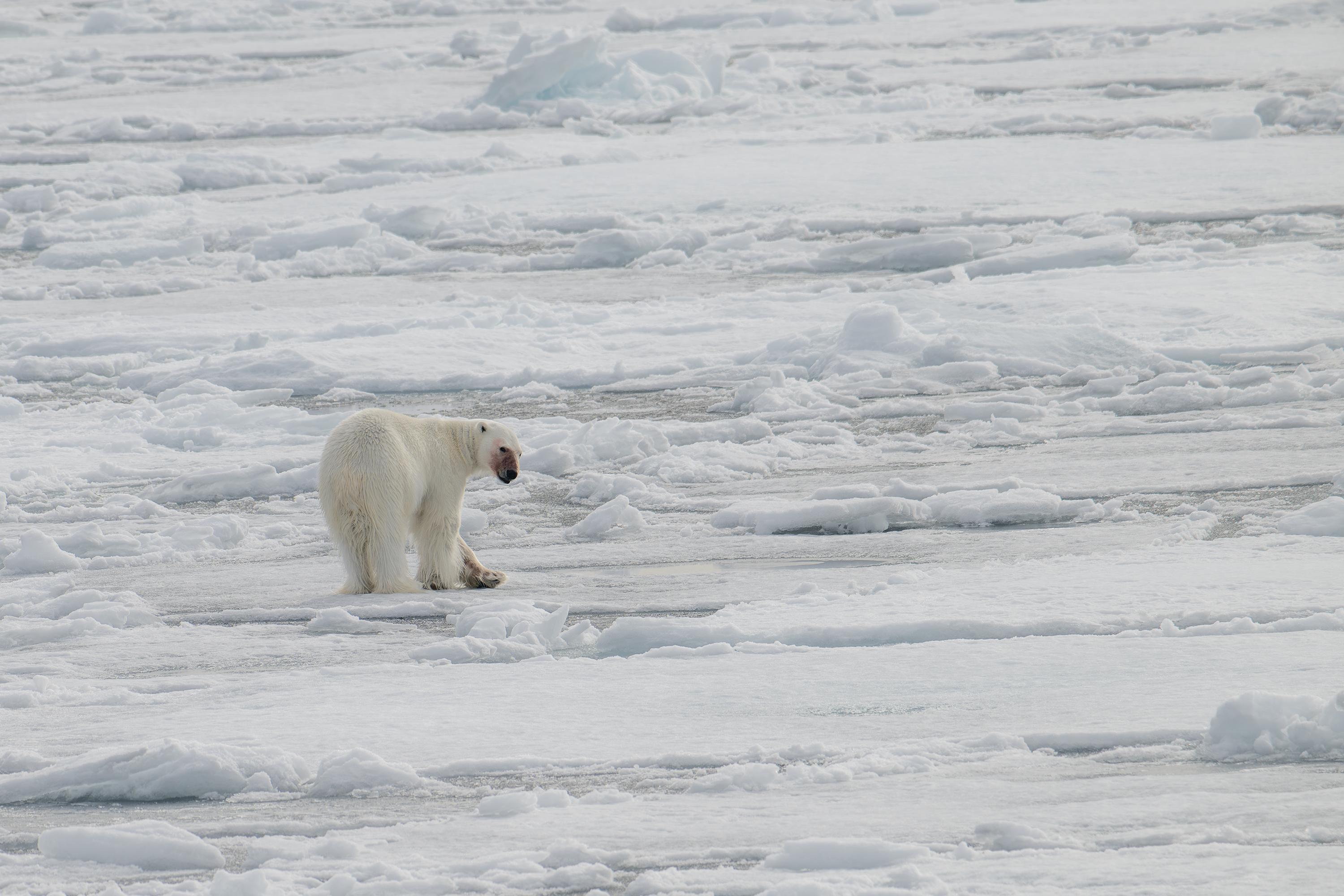
Its red mouth betrays it...
Searching for a bear on the ice floe involves both chance and experience, and we got the two, the captain of the boat was very experimented cruising throw the ice and knowing how to approach the bears. When a crew of the boat spotted a bear, it was very far away ...... just a little dot on the ice floe. When we arrived it just finished its seal's meal and seemed to be tired, needing a little rest.
After his little nap and against all odds, the well-fed bear approached the boat.
This is a very well known fact that bears needs ice floe to survive. The biggest part of their food is seal.
To find them they have a very good smell. They can detect a seal who is situated several kilometers away from it.
In winter and at the end of the spring the bear waits for the seal when it comes to breathe and stick its head out of the hole. One bear eats about 60 seals a year. In spring when the females seals have given birth to their baby , the bear breaks the snow shelter by jumping on it. Ringed, bearded, hooded and harbor seals constitue the bulk of its menu.
In summer when the ice floe is melting, the bear diversifies its food with birds, eggs...
Sometimes bears attack the walruses with a very random result.
Global warming reduce each year the ice floe area in summer, making the search for seals increasingly difficult.
The polar bear, often likened to a big teddy bear, is the largest land carnivore on the planet. Its striking red mouth is a stark reminder of its predatory nature. Locating a bear on the ice floe requires both luck and expertise; our captain was exceptionally skilled at navigating the icy waters and approaching these magnificent creatures. Upon spotting a bear in the distance, it appeared as a mere dot against the vast expanse of ice. When we finally arrived, the bear had just finished its meal of seal and seemed to be enjoying a well-deserved rest before it unexpectedly approached our boat.It is a well-known fact that polar bears rely on ice floes for survival, with seals comprising the majority of their diet. Their acute sense of smell allows them to detect seals from several kilometers away. During winter and late spring, bears patiently await seals as they surface to breathe. Each bear consumes approximately 60 seals annually, utilizing their strength to break through the snow shelters of nursing females. In warmer months, as the ice melts, their diet diversifies to include birds and eggs; occasionally, they even attempt to prey on walruses, though with unpredictable outcomes. Unfortunately, global warming continues to diminish the ice floe area, making seal hunting increasingly challenging for these majestic animals.